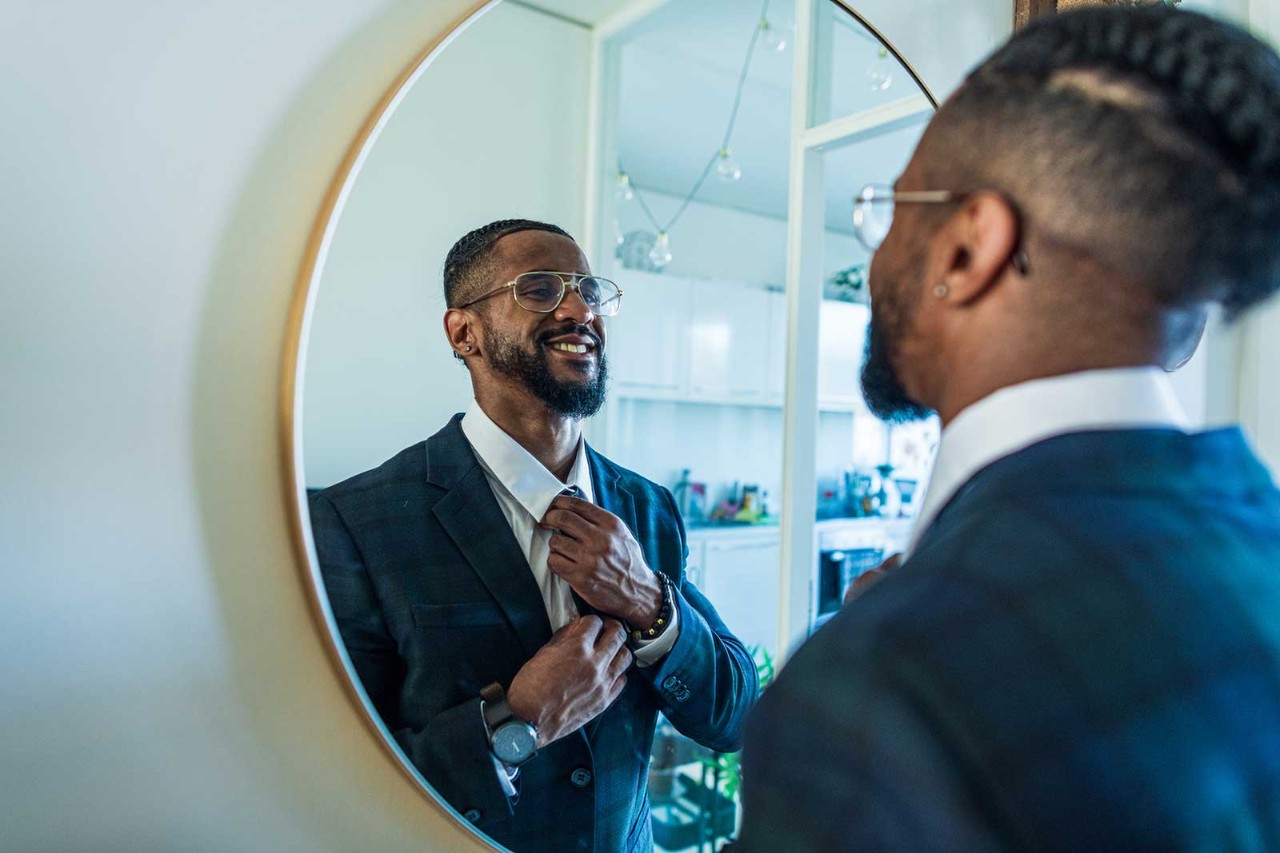
‘The office should be a destination, not an energy drain,’ says Chloe Sproston, creative director of Blueprint Interiors, on why workplaces are still struggling to fill seats post-pandemic. In February 2025, one in four US workdays were remote – up from one in 14 pre-pandemic – but Sproston sees a generational divide.
‘Younger employees want office culture,’ she says. ‘They look to the workplace as a resource with the highest level of technology and the best place to be recognised for advancement.’
‘The best offices now facilitate informal “collisions” – the kind you can’t get over Zoom’
With over half of Gen Z believing that the value of the office has increased since the pandemic, here’s how forward-thinking companies can meet the expectations of a generation set to comprise a third of the workforce by 2030.
Human connection
Once the ultimate metric of success, the corner office has joined limit-free expense accounts as a distant memory. ‘Closed-door leadership and rigid seating plans are giving way for open spaces that foster interaction between junior and senior staff,’ says Rohan Whitehead, data training specialist at the Institute of Analytics.
The pandemic drove the shift; anyone who began their career or moved jobs in 2020 did so in a remote-first world, missing access to mentors. ‘The best offices now facilitate informal “collisions” – the kind you can’t get over Zoom,’ Whitehead says of the modern water-cooler moment.
As artificial intelligence (AI) automates routine tasks, workplaces must maximise human connection. ‘Whether it’s early-career employees engaging with leadership or informal areas for spontaneous brainstorming, the modern office is shifting towards interaction over hierarchy,’ says Dr Afshan Iqbal, an organisational psychologist at Alliance Manchester Business School.
Tech-free time
Screen-free zones are on the rise, particularly, notes Dr Iqbal, due to ‘technostress’ – the anxiety or overload from getting your head around new technologies.
‘When rest is modelled as part of work, not separate from it, stigma fades’
‘Cognitive strain caused by constant digital engagement is a growing concern as AI tools become more embedded in daily workflows,’ she says. Yet however scientifically sound the concept of a reset room is – brain-imaging research by Microsoft’s Human Factors Lab found that strategic 10-minute breaks reduced stress and boosted focus and engagement – Dr Iqbal sees a cultural hurdle. ‘Employees fear being perceived as disengaged or unproductive for using them,’ she says.
To be more than a gimmick, tech-free spaces must be integrated into the workday. Whitehead cites SAP and Salesforce as companies already using guided break times and recommending rest based on workload data. ‘When rest is modelled as part of work, not separate from it, stigma fades,’ he says.
Personalise spaces
That one space can serve every employee is as outdated as hoping a ping-pong table will improve staff retention. Adaptability is the new buzzword. Gary Chandler, CEO of Area – a workplace design consultancy that’s advised Amazon, LVMH and Adobe – foresees a bespoke workplace app to set sensory settings.
Imagine walking into a meeting room and the desk adjusts to your height, the lighting harmonises with your circadian rhythm, background music shifts to your taste. The app could sync with your calendar to suggest where to work based on your schedule – quiet space for focus, collaborative zones for team sessions – and link to your wearables to remind you to hydrate or stretch. Rather than doing a 9-5, your working hours could be aligned to your natural productivity peaks, while neurodivergent and accessibility needs (both visual and hidden) are fully accommodated.
‘Think of it as a workplace assistant that personalises your day and helps you leave the office feeling better than when you arrived,’ Chandler says.
‘Now, a workplace may have 10 to 20 different spaces’
Beyond the desk
Paul Sherwin, managing director at office design company Oktra, notices a curious change in offices: companies are taking on smaller spaces but making them far more interesting.
‘Two decades ago, you’d have three spaces: desks, meeting rooms and private offices for senior management,’ he says. ‘Now, a workplace may have 10 to 20 different spaces, giving people flexibility to choose where they work, from quiet zones to breakout spaces.’
The next challenge, as he sees it, is to harness AI video conferencing features to erase distance between remote and in-person engagement. Biometric facial IDs would ensure that only those invited to meetings were present. Communication gets aided by instant translation and live subtitles. AI can whip up a branded background and turn hand-scribbled notes into digital copy. Then, post-meeting, facial analysis will assess users’ engagement to presentations and summarise when participants veered off-topic.
HR will go VR
Reducing the paper trail of traditional onboarding processes, virtual reality (VR) is emerging as a powerful tool to transform how we develop talent. Dr Iqbal points to Bank of America, where new starters interact with avatars in a fully virtual version of the bank to simulate everyday tasks and complex client interactions. In the automotive industry, meanwhile, Volkswagen’s VR simulations teach assembly processes, with supervisors offering real-time feedback.
‘VR gives managers a clearer picture of where someone might need extra support’
‘VR’s immersive nature reduces distractions and increases focus, making it a great way to support skill-building, but it also gives managers a clearer picture of where someone might need extra support or coaching,’ Dr Iqbal says.
Stay accountable
‘I’ve spent a lot of time looking at sustainability through analytics, particularly in SMEs, and when employees see how their behaviour affects a building’s footprint – whether it’s leaving lights on or adjusting the thermostat – it creates a powerful sense of responsibility,’ Whitehead says. As smart buildings’ Internet of Things devices track real-time energy, water and air quality metrics, publicising that data internally fosters accountability.
‘Dashboards that display carbon savings from reduced energy usage or waste reduction can be shared at the team level, turning sustainability into a shared narrative rather than a top-down mandate,’ Whitehead says. ‘Ultimately, the more visible the data, the more meaningful the culture shift.’
More information
Read our Future of work special edition April 2025.
Listen to our guided meditation podcast to help you pause and reset during a busy working day.



